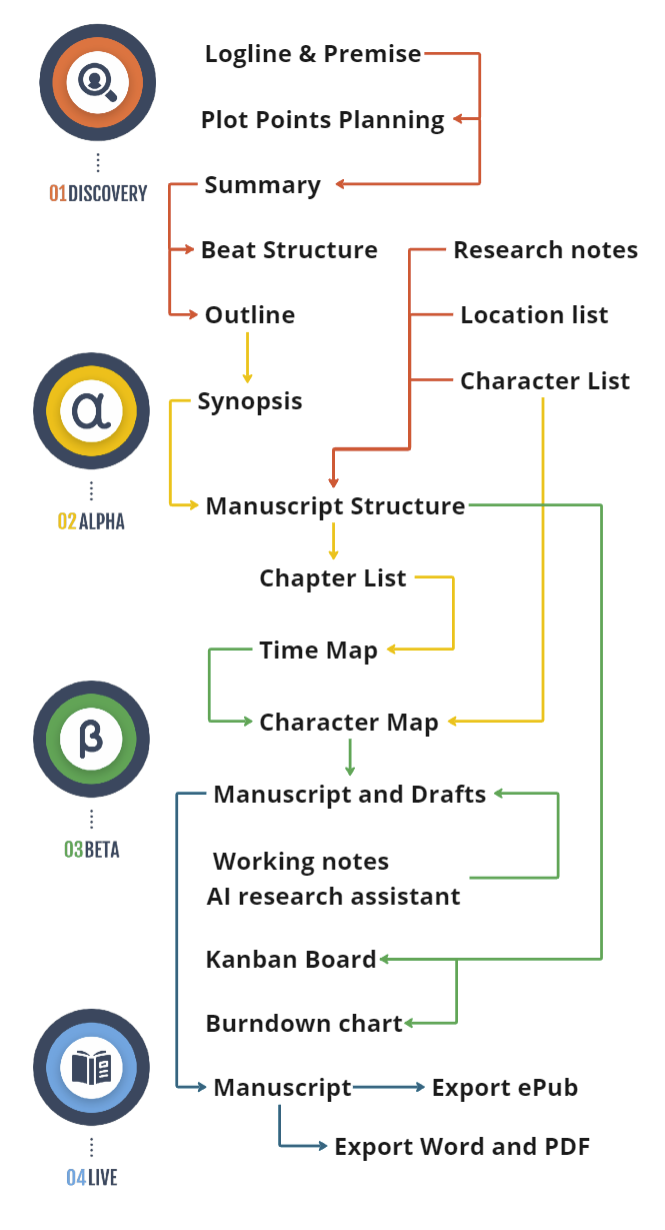Many writers sense an overarching “vision” lurking behind their individual projects—a guiding blueprint that shapes their thematic choices, their style, and the emotional signature they leave on every page. It may not be obvious at first; often, we begin writing with a scattered array of ideas, uncertain of how they connect. Yet as we grow, we notice certain threads—obsessions, curiosities, moral stances—cropping up repeatedly. Once recognized, these threads form a vision strong enough to transform mere stories into works of impact.
This deeper blueprint might revolve around a message you want to share about humanity’s resilience, the complexity of love, or the interplay between technology and ethics. Identifying it allows you to align all aspects of your writing—characters, settings, conflicts—so they reinforce that inner vision. When this alignment happens, readers feel the weight and sincerity of your words. It’s as though they can sense the hidden architecture beneath your every sentence.
“The Vision Manifest” refers to the moment when your underlying blueprint reveals itself in your writing. It’s both an epiphany and a tool. On one hand, it feels like discovering a personal credo; on the other, it provides a structural guideline that influences how you craft and edit. Having clarity of vision does not mean your writing becomes predictable—rather, it gains coherence and purpose. If you’ve ever felt that your stories share a certain heartbeat—maybe a recurring concern about environmental destruction, or a fascination with human connections across barriers—you likely stand to benefit from formalizing that vision. This approach suits novelists, bloggers, and short-story writers equally. Even journalists and essayists can refine their distinctive angle by pinning down what overarching insight they aim to convey over the long haul.
- Reflect On Past Work: Skim through old drafts, completed pieces, or even personal notes to find common themes. Are your protagonists always grappling with isolation? Does your writing often highlight kindness amid adversity?
- Extract The Core Principle: Summarize that recurring theme in one or two sentences—your blueprint. Maybe it’s “Hope can flourish in even the darkest corners” or “Technology must be wielded with empathy.”
- Test Each New Idea: When you embark on a fresh story or revise a chapter, ask: “How does this align with my vision? Does it challenge, affirm, or deepen it?” This ensures consistency without stifling creativity.
- Evolve Over Time: Your blueprint is not static. As you grow, your vision might shift, expand, or refine. Embrace that evolution rather than clinging to an outdated perspective.
- Communicate Subtly: The blueprint is for you, the writer, to shape the deeper layers of your work. You needn’t declare it outright to readers. Let them sense it organically through powerful storytelling.
A writer with a clear vision writes with conviction that resonates far beyond the page. Readers detect that confidence, and it draws them deeper into the narrative. Moreover, having a guiding blueprint can help you stay motivated during challenging phases of the writing process. When you remember the larger “why” behind your stories, you persevere. Over time, that vision becomes part of your unique signature, the reason readers seek out your work in a sea of new releases.
Set aside half an hour to look back on your past writing—whether published or still in draft form. Identify at least one recurring thread. Turn it into a concise statement. Then, as you plan your next story or scene, challenge yourself to reinforce or explore that statement. In doing so, you’ll unlock a blueprint that can guide your writing toward greater depth and impact.




